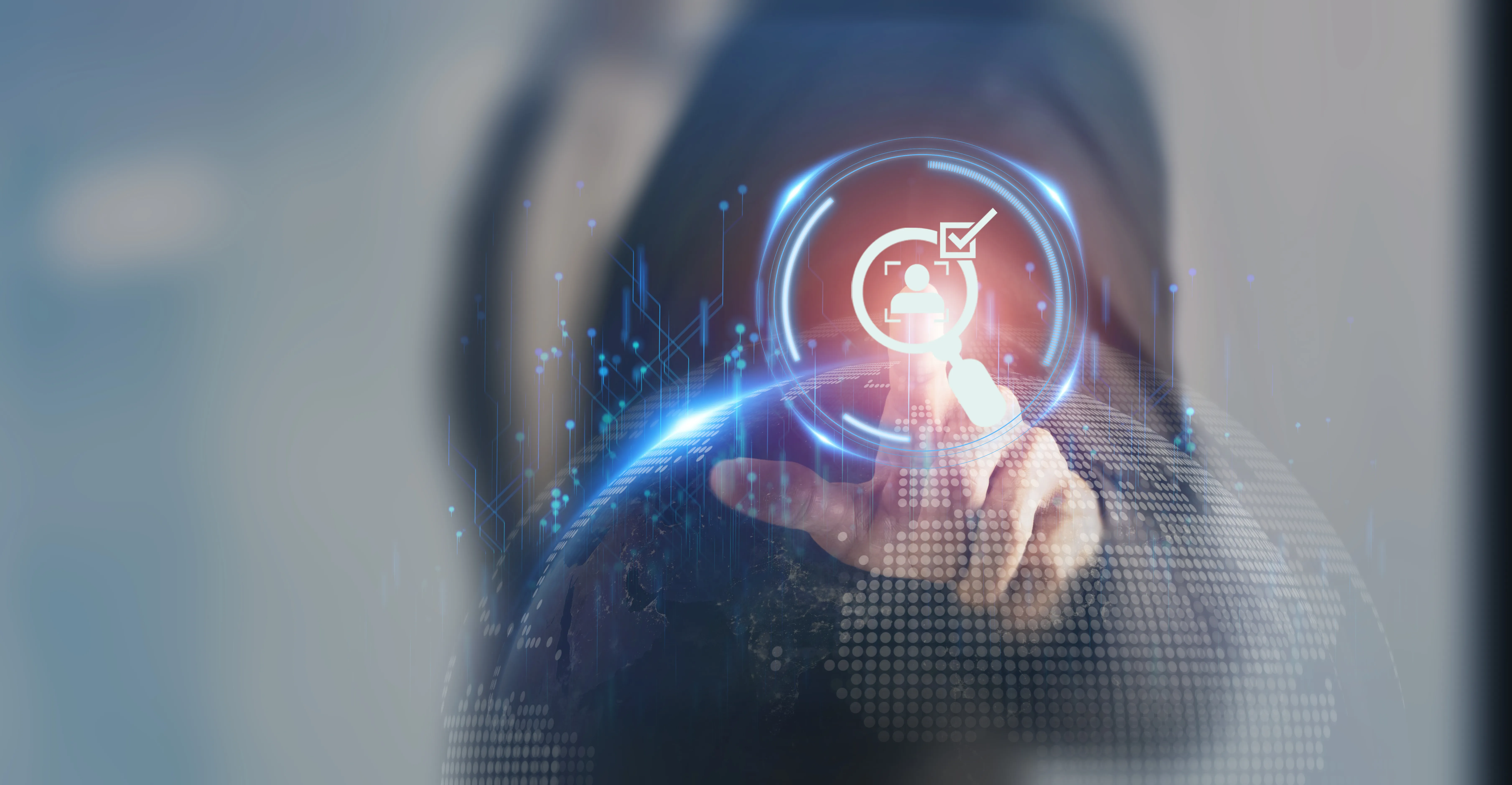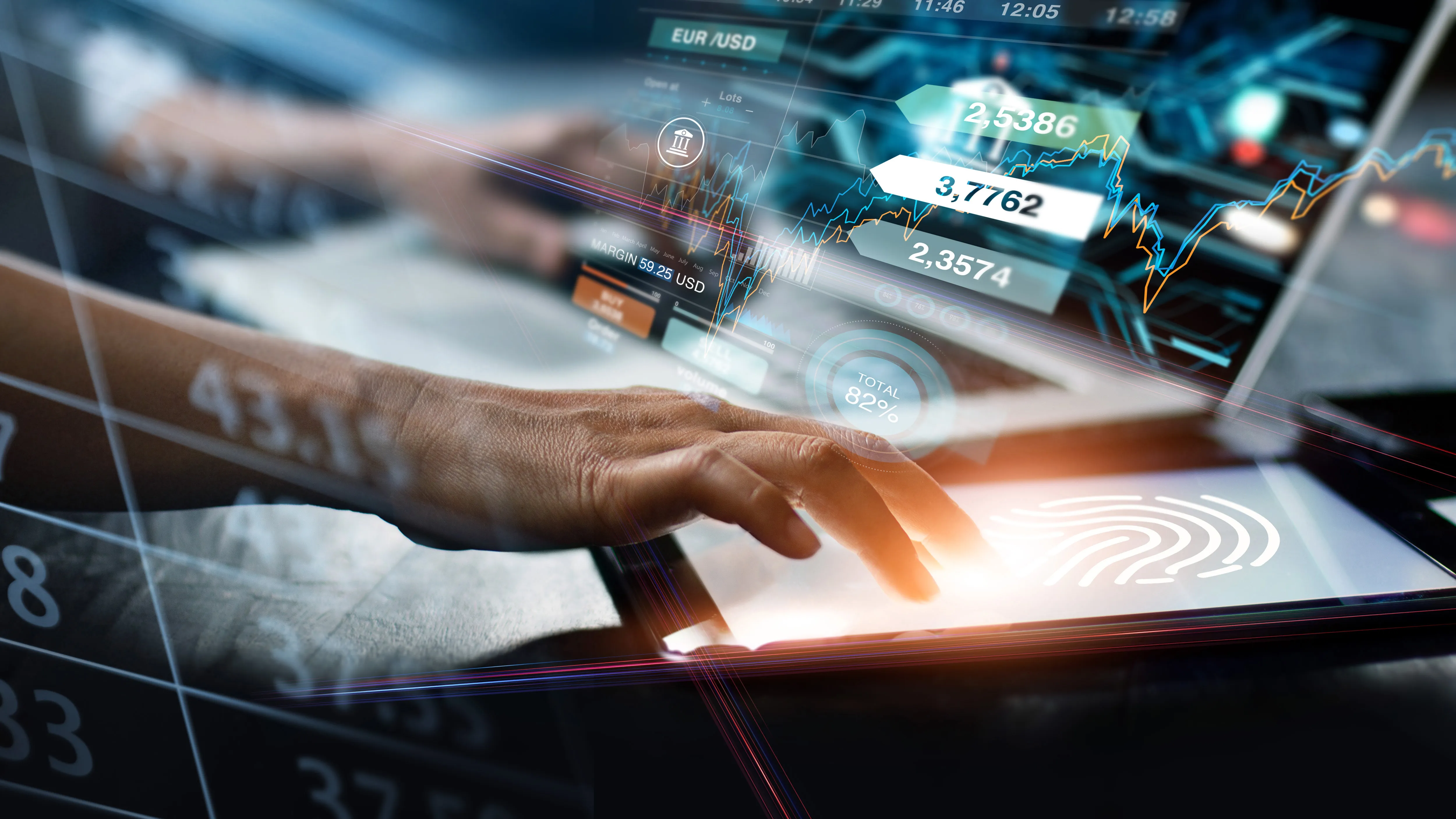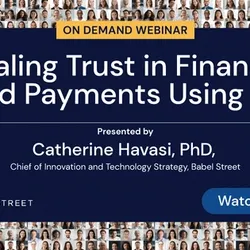KYC Solutions
AI-powered KYC solutions streamline KYC procedures while improving name-match rates and reducing the need for manual investigation.

Are you looking for easy AML and KYC solutions?
We have bad news for you: There are none. In financial institutions, complex verification-and-review processes merge with evolving anti-money laundering mandates to create challenging know your customer (KYC) environments. That won’t change. However, AI-powered KYC solutions can help streamline KYC procedures while significantly improving name-match rates and dramatically reducing the need for manual investigation.
The importance of KYC (Know Your Customer)
The United Nations estimates that criminals worldwide launder between $800 billion and $2 trillion each year, representing anywhere from 2% to 5% of the world economy.[1] The money both stems from and funds heinous crimes. These include terrorism, human trafficking, weapons trafficking, the drug trade, and the creation and distribution of child sexual abuse materials. Legislators worldwide believe that when the flow of money stops, instances of these crimes plummet. That’s why most nations have implemented stringent anti-money laundering laws.
To comply with these laws, financial institutions must meet demanding KYC requirements — mandatory processes for verifying a customer’s identity at account opening and periodically thereafter. These requirements aim to reduce crime, ensure transparency, and safeguard the integrity of the financial system.
Know your customer AML processes consist of:
Customer identification — Financial institutions (FIs) verify and identify customers using documents such as passports, national IDs, drivers’ licenses, or other government-issued identification.
Risk assessment — FIs use various risk assessment tools and processes to evaluate and manage the risks posed by a customer, potential customer, or transaction.
Enhanced due diligence — Banks apply a higher level of scrutiny (called “enhanced due diligence”) to high-risk prospects, customers, and transactions.
Ongoing monitoring — To comply with AML laws, FIs periodically monitor customer accounts during the life of those accounts.
Record keeping — Know your customer bank requirements demand that FIs maintain comprehensive records of customer identification, transactions, and any communications related to know your customer checks.
Updating know your customer compliance efforts — Banks need to understand evolving AML measures and adapt their KYC review procedures accordingly.


Coping with evolving mandates
The need to stay abreast of evolving AML mandates is what makes KYC processes so challenging.
In October 2023, the United States Senate introduced a bill requiring the Financial Crimes Enforcement Network (FinCEN) to issue guidance on the how to stop the use of digital assets for money laundering.[2] In the European Union, the Sixth Anti-Money Laundering Directive took effect in late 2020 — less than a year after implementation of Europe’s Fifth Anti-Money Laundering Directive.
These are just two examples of an AML regulation cycle that shows no sign of easing. Legislators write new mandates to align with evolving money laundering scams. No matter how hard FIs work to meet AML mandates, they are caught in a vicious cycle of new crimes begetting new laws leading to ever-more-demanding KYC requirements.
The situation challenges FIs. But the right KYC solutions can help FIs and other businesses not only more easily meet AML mandates, but improve business.
The KYC challenge
The problem: Most banks have yet to deploy the right type of KYC solution. Babel Street believes in the power of artificial intelligence (AI) to dramatically improve KYC processes. Yet, according to the World Economic Forum, only 56 percent of banks worldwide use any type of AI.[3] Instead, financial institutions typically rely on rules-based processes for KYC. These processes are time consuming, error prone, and require significant manual intervention.
In rules-based KYC processes, an AML specialist compiles and codifies a set of conditions that, if met by a particular transaction, cause the system to alert an investigator to potential money laundering. Transactional dollar limits are a classic example of this: AML systems note all transfers over a given amount, then alert an investigator to follow up.[4] While a small fraction of these alerts may indicate criminal activity, PwC estimates that up to 95 percent of the millions of alerts sounded in financial institutions annually are false positives.[5] These false positives make AML detection vastly more expensive and time consuming than it needs to be: live investigators must review each alert.

Learn the basics

eBook
Matching Software Surmounts Four Major AML/KYC Challenges
Babel Street Analytics Match helps FIs improve AML/KYC by more quickly analyzing, matching, and scoring the names of individuals and corporations.

eBook
AI Helps Financial Institutions Comply with Emerging Regulations
The value that AI delivers to the financial sector for AML/KYC compliance.

eBook
The Complete Guide to Name Matching
The concepts around name matching, including what it is, how it’s used, and why standard search is inadequate when it comes to names.

eBook
7 Things to Look for in a Name Matching Solution
The must-have features needed for effective and accurate name matching.
AI-powered solutions improve KYC
Artificial intelligence can help institutions combat threats and improve compliance. Its multilingual name matching, entity resolution, and relationship-discovering capabilities can rapidly identify people, companies, and organizations — then map connections among them. From state and federal IDs to legal documents to customer emails, AI software can scour structured and unstructured data in a broad array of languages; create reports; generate detailed relationship visualizations; and tell you how confident it feels in the matches it makes. In doing so, AI slashes KYC costs and times, while dramatically reducing the chance of FIs running afoul of AML laws and incurring associated fines.
AI-powered KYC solutions accomplish all this by:


Business benefits
While FIs typically deploy AI-powered KYC solutions to meet AML mandates, these same solutions can be used to improve business.
First, these solutions improve fraud detection. Fraud is a complex crime with a direct impact on an FI’s bottom line. Financial institutions need every technological resource available to fight it.
AI excels at pattern recognition, a capability that is particularly valuable in fraud detection. In fact, unsupervised machine learning (a type of machine learning in which algorithms analyze unlabeled datasets, discovering patterns without human intervention) can identify fraud patterns human analysts would not have found on their own.
Still, too few FIs use AI in their fraud-detection efforts. Like KYC AML processes, most current fraud detection relies on rule-based systems to flag suspicious activity. Fraudsters too quickly uncover transaction rules and ways to avoid them.
AI is a better choice. Machine learning algorithms can analyze petabytes of information in hours, more quickly and accurately detecting fraud patterns. The nature of these solutions can also help cut personnel time and associated costs for fraud detection.
Beyond finance: Other uses for KYC solutions
While name matching and entity resolution capabilities are vital to complying with AML mandates, their uses extend beyond finance. Consider publicly supported health insurance as one example. In the United States, those seeking financial help paying for health insurance under the Affordable Care Act must provide proof of identity, citizenship, and income, along with information on any employer-provided insurance available to them. The Center for Medicare and Medicaid Services must verify that the person applying is who he claims to be, and that his income and insurance availability has been truthfully stated. Name matching and entity resolution technologies help in this effort. Name matching is similarly important in health care delivery: healthcare providers and insurance companies need to quickly find and link patient records to ensure the right care is delivered to the right person. Border security officials must continuously match names as they decide which visitors should be allowed entry to the country, and which pose a threat. Other government intelligence-gathering agencies require entity resolution when devising profiles based on huge volumes of unstructured data.
Second, KYC/AML solutions can improve the customer experience. They accomplish this in a number of ways. They can hasten onboarding, funds transfers, and other services. Stringent customer due diligence processes may leave prospects and customers frustrated by the amount of time it takes to open a new account or receive funds. Rather than waiting, these customers may choose to open an account at a different, faster FI.

Consider the following scenario
A large fintech company offers consumers full-service accounts for spending and savings. These accounts provide customers with reloadable cards that enable them to easily pay bills and receive funds — including payroll direct deposits. But name matching proves a challenge. Sometimes, a customer name on record at the fintech varies slightly from payee names. The system cannot recognize that its customer “Rebecca Hockenbury” is the same person as the payee named “Rebecca Haukenbury,” “Becky Hockenbury” or “Hockenbury, Rebecca.” As a result, each of these payee names have to be manually investigated and matched to the Rebecca Hockenbury on record. This process dramatically increases the amount of time it takes for Ms. Hockenbury to access her funds, and she leaves this company for a speedier FI.
AI-powered fuzzy-logic name-matching solutions would improve the banking experience for this customer. Fuzzy logic is a computing approach that considers degrees of truth when making determinations. When used in name matching, fuzzy logic can identify similar names and rank the likelihood of these names referring to the same person — bypassing the need for human investigation.
Financial institutions can also improve the customer experience by using a KYC platform to develop a single view of individual customers, then targeting products and services to meet those customers’ specific needs. This process improves customer acquisition and retention efforts.
In many financial institutions today, customer data is either stored in data lakes or scattered across siloed warehouses. The same AI capabilities used to match names and resolve entities for AML, KYC, and anti-fraud efforts can give FIs a business-critical view of who’s who. FIs can then tailor their offerings and marketing efforts appropriately, engendering stronger customer relationships.
What to look for in a KYC and anti-money laundering solution
Clearly, financial institutions and other organizations need AI-powered KYC solutions to meet the challenges of complying with evolving AML mandates and to obtain other business benefits. But what should you look for in a solution?

Conclusion on KYC Solutions
Too many existing KYC systems inadequately address pressing needs for fast, automated, name matching and entity resolution. They are slow, unsuited to the examination of massive data sets, and prone to human error. API-based, AI-powered, interoperable name matching and entity resolution solutions can help FIs and other businesses better comply with AML mandates while improving business.
Babel Street’s AI-powered KYC solutions provide FIs with the name-matching and entity resolution capabilities needed to meet stringent AML requirements and improve business by:
- Streamlining onboarding, verification and screening processes
- Dramatically reducing human investigative time
- Reducing instances of false positive matches by up to 90% while concurrently missing fewer matches
- Obtaining a single view of each customer to both better comply with AML mandates and improve sales and marketing efforts.
In doing so, Babel Street also helps FIs close the widening chasm between the escalating volume and variety of data that must be examined to comply with AML mandates and the resources organizations have available to monitor that data.
KYC Platform FAQs
Endnotes
1. United Nations, “Money Laundering Overview,” 2022, https://www.unodc.org/unodc/en/money-laundering/overview.html
2. Congress.Gov, “S.2669 — Digital Asset Anti-Money Laundering Act of 2023,” 2023, https://www.congress.gov/bill/118th-congress/senate-bill/2669/text#:~:text=Introduced%20in%20Senate%20(07%2F27%2F2023)&text=To%20require%20the%20Financial%20Crimes,assets%2C%20and%20for%20other%20purposes.&text=A%20BILL-,To%20require%20the%20Financial%20Crimes%20Enforcement%20Network%20to%20issue%20guidance,assets%2C%20and%20for%20other%20purposes
3. World Economic Forum, “Forging New Pathways: The Next Evolution of Innovation in Financial Services,” 2020, https://www3.weforum.org/docs/WEF_Forging_New_Pathways_2020.pdf
4. Deloitte, “Why artificial intelligence is a game changer for risk management,” 2016, https://www2.deloitte.com/content/dam/Deloitte/us/Documents/audit/us-ai-risk-powers-performance.pdf
5. Basis Technology, “What Can AI Do for Risk Technology Today?” 2018, https://www.basistech.com/honest-ai/what-can-ai-do-for-risk/
6. Financial Action Task Force, “The FATF Recommendations,” February, 2023, https://www.fatf-gafi.org/en/publications/Fatfrecommendations/Fatf-recommendations.html
7. Directive (EU) 2015/849 of The European Parliament and of the Council of The European Union. May 20, 2015. https://eur-lex.europa.eu/legal-content/EN/TXT/PDF/?uri=CELEX:32015L0849&rid=2
8. Finance Crimes Enforcement Network, “Joint Statement on the Risk-Based Approach to Assessing Customer Relationships and Conducting Customer Due Diligence,” July 6, 2022, https://www.fincen.gov/sites/default/files/2022-07/Joint%20Statement%20on%20the%20Risk%20Based%20Approach%20to%20Assessing%20Customer%20Relationships%20and%20Conducting%20CDD%20FINAL.pdf.
Disclaimer
All names, companies, and incidents portrayed in this document are fictitious. No identification with actual persons (living or deceased), places, companies, and products are intended or should be inferred.






